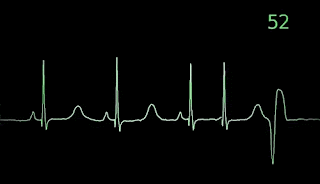Artificial Intelligence Detects Heart Failure With 100% Accuracy
Artificial Intelligence Detects Heart Failure With 100% Accuracy
With the help of Artificial Intelligence(AI), researchers have developed a neural network approach that can accurately identify congestive heart failure with 100 per cent accuracy through analysis of just one raw electrocardiogram (ECG) heartbeat.
Congestive heart failure (CHF) is a chronic progressive condition that affects the pumping power of the heart muscles. Associated with high prevalence, significant mortality rates and sustained healthcare costs, clinical practitioners and health systems urgently require efficient detection processes.
The researchers have worked to tackle these important concerns by using Convolutional Neural Networks (CNN) – hierarchical neural networks highly effective in recognising patterns and structures in data.
“We trained and tested the CNN model on large publicly available ECG datasets featuring subjects with CHF as well as healthy, non-arrhythmic hearts. Our model delivered 100 per cent accuracy: by checking just one heartbeat we are able detect whether or not a person has heart failure,” said study researcher Sebastiano Massaro, Associate Professor at the University of Surrey in the UK.
“Our model is also one of the first known to be able to identify the ECG’s morphological features specifically associated to the severity of the condition,” Massaro said.
Published in Biomedical Signal Processing and Control Journal, the research drastically improves existing CHF detection methods typically focused on heart rate variability that, whilst effective, are time-consuming and prone to errors.
Conversely, their new model uses a combination of advanced signal processing and machine learning tools on raw ECG signals, delivering 100 per cent accuracy.
“With approximately 26 million people worldwide affected by a form of heart failure, our research presents a major advancement on the current methodology,” said study researcher Leandro Pecchia from the University of Warwick.
Via : University of Surrey




Comments
Post a Comment